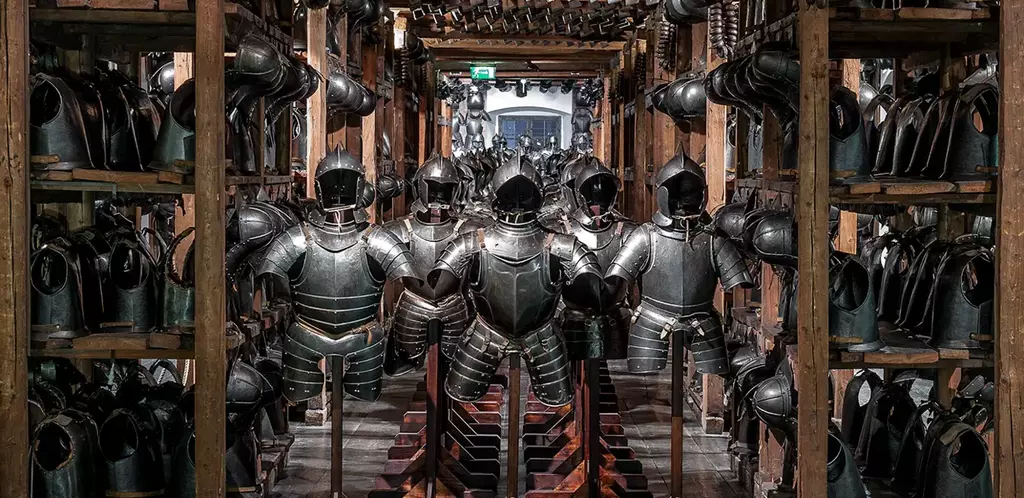Styrian Armoury

- The Styrian Armoury (Landeszeughaus) in Graz is the world’s largest historical armory, preserving an extensive collection of weapons, armor, and military equipment from the 16th to 18th centuries. Built in the mid-17th century, the armory was intended to supply Styria’s militia with the necessary arms to defend against Ottoman and Hungarian invasions. Its four-story Baroque-style building, located in the heart of Graz, remains largely unchanged since its original construction, making it a remarkable time capsule of military history.
- The collection boasts over 32,000 artifacts, including suits of armor, swords, muskets, pistols, pikes, and cannons. Unlike many museums that display weapons behind glass, the Styrian Armoury maintains its historical layout, with items stacked and arranged as they would have been centuries ago. Walking through the narrow wooden aisles, visitors can see rows of gleaming helmets, breastplates, and firearms, gaining a sense of the scale and intensity of historical warfare. The armory’s preservation offers a rare glimpse into the past, allowing visitors to experience the atmosphere of a fully stocked 17th-century arsenal.
- Each floor of the armory showcases different aspects of warfare. The ground floor focuses on heavy artillery and large weapons, while the upper floors display infantry weapons, full suits of armor for knights and soldiers, and intricate officer uniforms. Some pieces are elaborately decorated, reflecting the craftsmanship of the time. The armory also houses rare experimental weapons and prototypes that reveal the technological advancements of early European warfare. Guided tours provide deeper insights into the history and function of the items on display.
- As one of Graz’s most unique historical sites, the Styrian Armoury attracts historians, weaponry enthusiasts, and curious visitors alike. It remains a testament to the region’s turbulent past and the resilience of its people. The armory, now managed by the Universalmuseum Joanneum, continues to be a cultural treasure, offering an unparalleled look into Central Europe’s military heritage.
